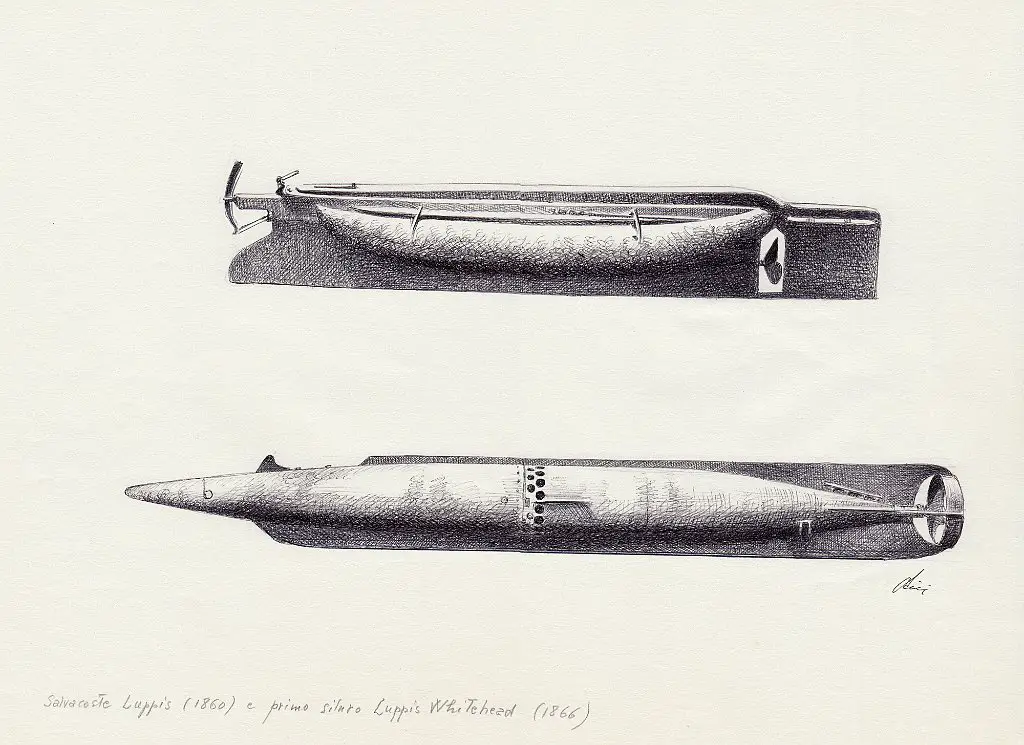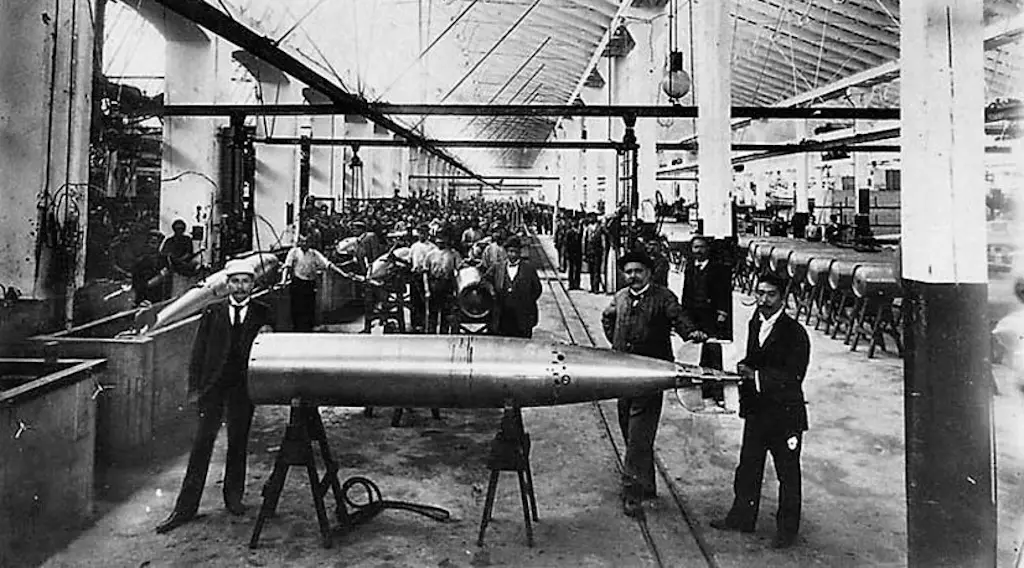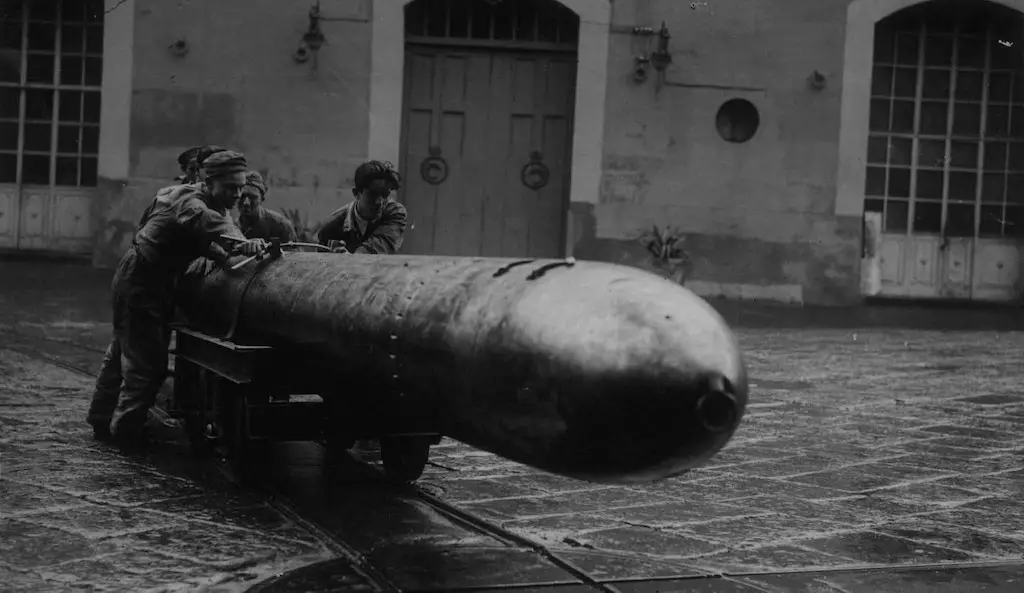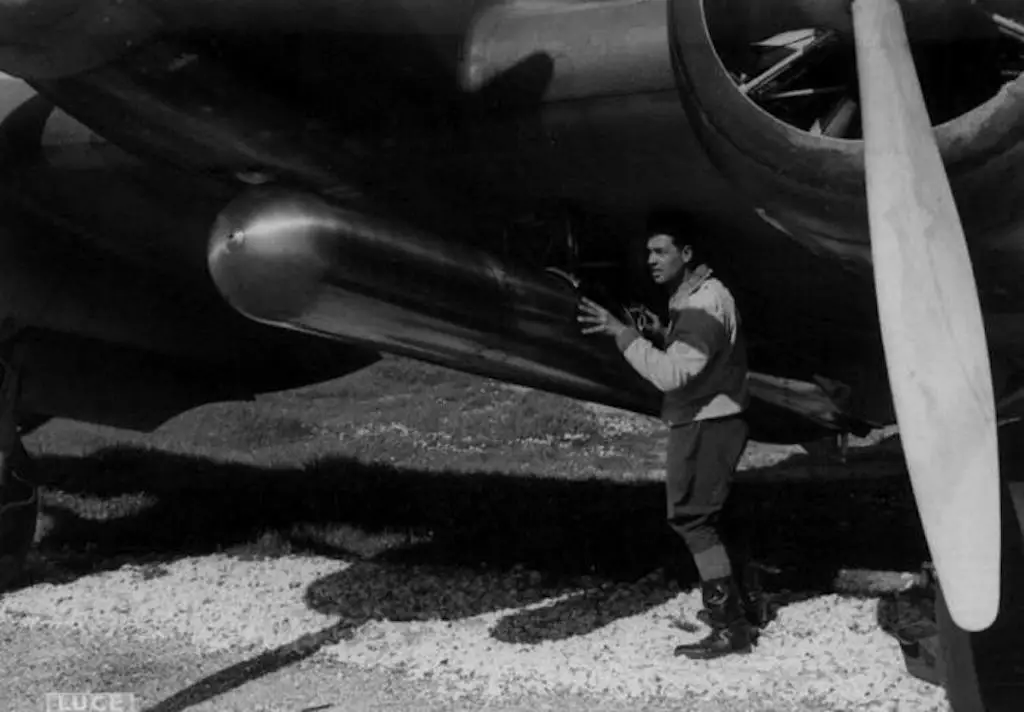In the 1860s, an encounter between two visionaries in a city on the Adriatic sea spawned the birth of a weapon that would forever change naval warfare: the Whitehead torpedo.
Origin of the Whitehead Fiume Torpedo
Giovanni Biagio Luppis von Rammer was a frigate captain of the Austro-Hungarian Navy. Born in 1813 in Fiume (now Rijeka, Croatia), he envisioned a new kind of naval weapon, the Salvacoste (Coast Saver). The Salvacoste was a crewless and wire controlled floating device, equipped with an explosive charge. Its purpose was to target enemy ships operating near the coastline.
The device displayed several problems, and initial testing did not prove satisfactory. Luppis obtained the aid of Fiume’s Mayor, who contacted British engineer Robert Whitehead.
In 1864, the two men met in Fiume. Whitehead began making radical changes and improvements to Luppi’s’ device. Whitehead, in fact, designed a self-propelled, independent weapon capable of navigating underwater undetected and at a remarkable speed.

Design of the 1860 Salvasosta is seen on top. The 1866 Luppis Whitehead is on the bottom.
In 1866, the new prototype became known as the Whitehead torpedo. Compared to the Salvacoste, the weapon had a much more tapered body. It included two small aft wings that acted as stabilizers. Also, the fore section contained an explosive charge. In 1868 the Austro-Hungarian Navy purchased a non-exclusive license to produce the Whitehead Torpedo. Soon, other navies of the world added the torpedo to their arsenal.
Torpedo Fabrik von Robert Whitehead
After the death of Giovanni Luppis in 1875, Robert Whitehead founded a private company in Fiume called Torpedo Fabrik von Robert Whitehead. It specialized in producing torpedos, torpedo launchers, and compressors. In the following decades, the Fiume torpedo factory prospered and perfected its devices. The torpedoes became essential for the development of another revolutionary weapon, the submarine.

Torpedo Fabrik von Robert Whitehead, circa 1900.
In 1905 Whitehead died, and the company fell under the control of the British group Vickers-Armstrong. Later in 1914, a subsidiary company opened in Naples called Società Anonima Italiana Whitehead.
The Great War and New Italian Property
At the beginning of the First World War, the Torpedo Fabrik worked exclusively for the Central Powers. After Italy entered the war on the Entente side (24 May 1915), Fiume’s production equipment transferred to St. Polten, near Vienna. But a few production lines remained in the city. In August 1916, the Italian Navy shelled the factory, located a few kilometers west of the city, between the village of Plase and Cantrida.
Silurificio Whitehead di Fiume S.A.
At the end of the war, with the defeat of the Central Powers, a crisis hit Fiume, and the Torpedo factory stopped production. In 1924, after the Kingdom of Italy annexed Fiume. The factory entered a new era of development. It acquired the new name of Silurificio Whitehead di Fiume S.A.
In 1934, the Silurificio developed the new 533 mm torpedo equipped with a 300 kg explosive charge and capable of various speeds: 50 knots for 4 km distance, 40 knots for 8 km, and 30 knots for 12 km. In 1937, the Fiume-based company established a new subsidiary, the Moto Fides company in Livorno.
Italy’s Whitehead Torpedo in the Second World War
When Italy entered the war, in June 1940, the Italian Regia Marina relied on approximately 1,450 torpedo launchers mounted on various units. Italy’s total inventory included 3,650 of mixed 533 mm and 450 mm torpedoes, an average of 2.5 weapons per launcher.
However, the Regia Marina did not have enough modern 533 mm torpedoes to arm their newer submarines and destroyers. Unfortunately, they possessed a huge stockpile of antiquated 450 mm torpedoes. As a result, these older weapons could only be utilized in older units like the 1920s era destroyers and torpedo boats.

Unloading a torpedo at an Italian naval base in the winter of 1940. Image: Archivio Centrale dello Stato.
At the opening of hostilities, the Regia Marina requested a significant boost in the production of 533 mm torpedos. As a result, existing plants became enlarged and improvements made in machinery.
Between 1940-1943, the three main Italian torpedo factories, Fiume, Baia (Naples), and Livorno, produced more than 3,700 torpedoes. These three factories also produced the new 450 mm aerial torpedo, utilized by the new torpedo bomber squadrons that formed August 1940. These aerial torpedoes were designed to be launched from 30-40 meters above sea level, but fundamentally similar to their naval counterparts.

The 450mm aerial Fiume Torpedo being loaded on an SM.79.
After the Armistice
In 1943, Germans seized the Fiume Factory. However, it’s unclear whether the torpedo production continued until 1945. With the end of the war, The Silurificio Whitehead di Fiume ceased to exist, and so did torpedo production. But, Whitehead’s legacy survives today in the Whitehead Alenia Sistemi Subaquei, an Italian company evolved from the old Moto Fides of Livorno.